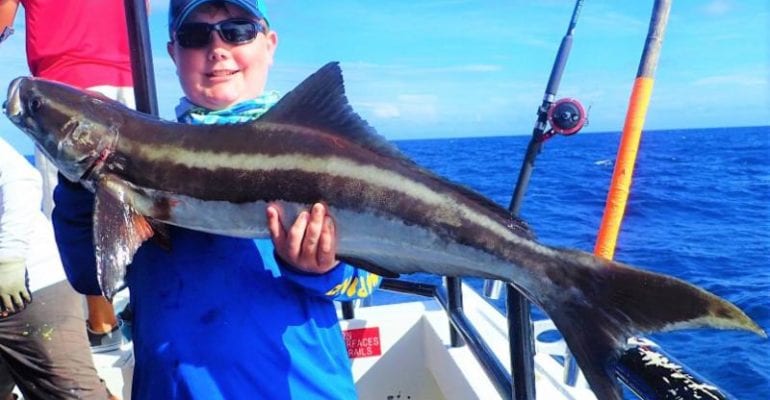| Note: values are in MRIP-Fishing Effort Survey units.
Formal Federal Register Name/Number: 87 FR 63958, published October 21, 2022.
This bulletin serves as a Small Entity Compliance Guide, complying with section 212 of the Small Business Regulatory Enforcement Fairness Act of 1996.
Frequently Asked Questions
Why are the catch limits being reduced?
- The most recent Southeast Data, Assessment, and Review population assessment for Gulf of Mexico migratory group cobia (Gulf group cobia), known as the SEDAR 38 Update, showed the stock was not overfished (the population is too low), but was undergoing overfishing (too many fish being caught).
- SEDAR 38 Update used updated recreational catch and effort data from Marine Recreational Information Program (MRIP) Fishing Effort Survey, which estimated larger than previously calculated catch and effort for the recreational sector.
- Because MRIP- Fishing Effort Survey data were used, estimates of historic recreational landings were greater than in previous assessments.
- The “increase” in the recommended catch limits compared to the current catch limits is largely a result of converting the recreational catch and effort data to the MRIP-Fishing Effort Survey
- The Gulf of Mexico and South Atlantic Fishery Management Councils’ Scientific and Statistical Committees recommended reduction in annual catch limits addresses the overfishing status of the Gulf group cobia.
Why is a possession limit change and new vessel/trip limit needed for Gulf of Mexico migratory group of cobia?
- Reduced catch limits recommended by the Gulf of Mexico and South Atlantic Fishery Management Councils’ Scientific and Statistical Committees were projected to result in a closure for both sectors in the Florida East Coast Zone unless additional management measures were addressed.
- To address the desire to extend the season, the recreational possession limit would be reduced to one fish per person per day, regardless of the duration or number of trips for both sectors in both the Gulf and Florida East Coast
- Additionally, creating a recreational vessel limit of 2 fish per trip and commercial trip limit of 2 fish per trip, both not to exceed the per person limit, would also address the desire to extend the season. This would also occur in both the Gulf of Mexico and Florida East Coast
- While a closure was not projected for the Gulf of Mexico Zone, these management measures by themselves were not projected to prevent a recreational closure in the Florida East Coast Zone. Having similar regulations in both zones for both sectors is expected to lessen confusion and ease compliance with fishery regulations.
Why is a minimum size limit change needed in the Florida East Coast Zone?
- Stakeholders fishing within the Gulf of Mexico Zone expressed concern to the Gulf of Mexico Fishery Management Council regarding the condition of the Gulf cobia population since 2016, with increasing frequency in public comment on the issue in 2017 and 2018.
- In 2019, the Gulf of Mexico Fishery Management Council requested NOAA Fisheries implement regulations to increase the Gulf group cobia minimum size limit to 36 inches fork length in the Gulf of Mexico Zone (effective March 25, 2020). The South Atlantic Fishery Management Council decided to wait to make changes until the population assessment was completed.
- It was projected that the combined effect of management measures proposed in Amendment 32 including increasing the minimum size limit, reducing the possession limit, and creating a recreational vessel/commercial trip limit would not result in a closure for either sector in the Florida East Coast Zone under the reduced catch limits.
Where can I find more information on Amendment 32?
- Contact NOAA Fisheries, Southeast Regional Office
By Mail: Kelli O’Donnell
NOAA Fisheries, Southeast Regional Office
Sustainable Fisheries Division
263 13th Avenue South
St. Petersburg, Florida 33701-5505
By FAX: (727) 824-5308
By Phone: (727) 824-5305
|



